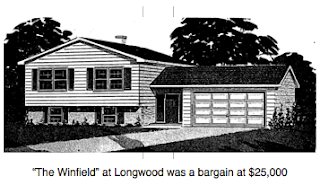Naperville’s 1966 Population Boom
 Naperville had already started its growth spurt, but 1966 certainly accelerated the boom.
Naperville had already started its growth spurt, but 1966 certainly accelerated the boom.
In August, 700 employees started work at Indian Hill Bell Labs, known more recently as Lucent. Later in the year, Amoco Chemicals asked the city to annex160 acres for them to build a research facility.
The city also annexed 210 acres that were owned by the Chicago Burlington and Quincy Railroad. Immediately, Nabisco purchased some of that land although the plant wouldn’t be completed until 1968. There are car dealerships and light industry in that section as well as the new Fort Hill Activity Center.
Naperville certainly didn’t have enough housing for the employees who were working all these new jobs. Harold Moser had already been developing subdivisions like Aero Estates, Maplebrook and Cress Creek since the mid-1950s, but 1966 was better than ever for Moser and his competitors.
 Naperville beat neighboring suburbs in the number of building permits issued for several months in a row that year. New homes were built in Saybrook, Maplebrook, Longwood and Century Hill.
Naperville beat neighboring suburbs in the number of building permits issued for several months in a row that year. New homes were built in Saybrook, Maplebrook, Longwood and Century Hill.
“New England” styles were popular — and for a good reason. Many of Bell Lab’s transferees were from the east coast.
 Ken Small was Bell’s public relations supervisor at the time. He took city and school officials out to New Jersey to help families get comfortable with the move. Small himself fell in love with Naperville and served as mayor from 1971 until 1975.
Ken Small was Bell’s public relations supervisor at the time. He took city and school officials out to New Jersey to help families get comfortable with the move. Small himself fell in love with Naperville and served as mayor from 1971 until 1975.
 In one article about new homes in Century Hill, the reporter wrote that “Naperville retains many small town customs, such as summer band concerts in the park and ice cream socials.”
In one article about new homes in Century Hill, the reporter wrote that “Naperville retains many small town customs, such as summer band concerts in the park and ice cream socials.”
While the price of homes here have certainly changed, it’s nice to know some things stayed the same.